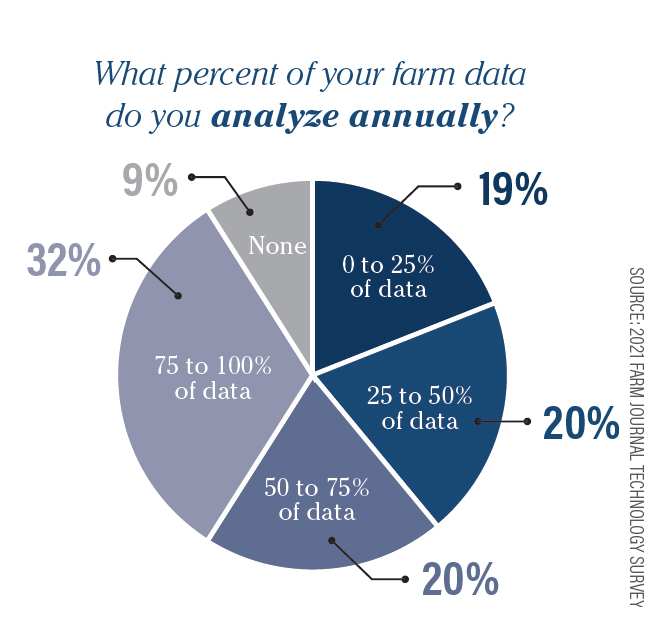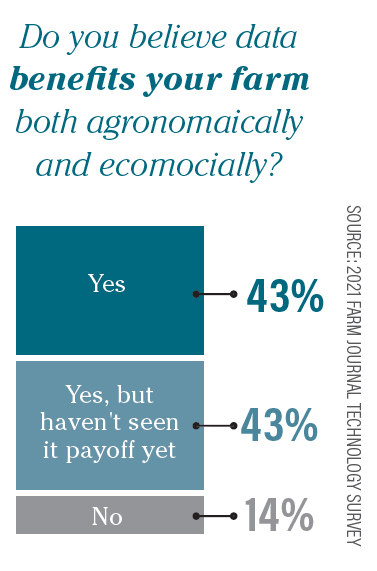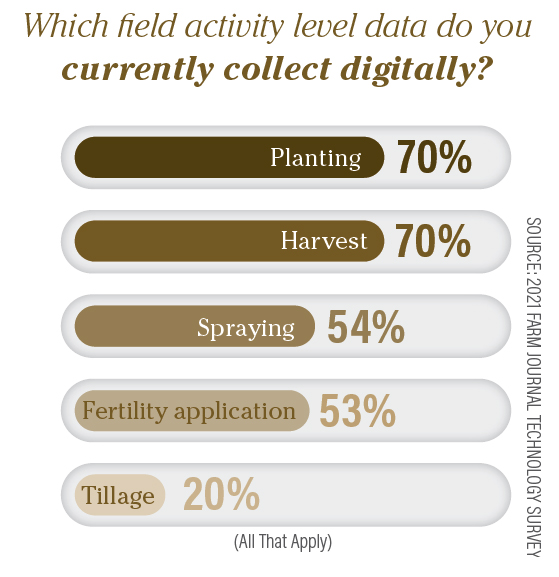Technology Is ... Harvesting Field Data

Take your digital strategy to the next level
By Tyne Morgan and Sara Schafer
Over the past four decades, Steve Pitstick has been on a quest to increase efficiency and perfect production in his northern Illinois fields. The focus of his quest is trying to capture everything he does in every field he farms.
“Every time we cross a field, we are trying to document everything from the herbicides, tillage passes, planting passes and yield,” Pitstick says. “I have 25 years of data on the farm where I live.”
Pitstick says the more data he digested in the initial years of his journey, the quicker he could fix things he was doing wrong.
“Early on, we made a lot of 10% improvements,” he says. “In the last five years, it’s been much more difficult. So, we’re trying to find those 1% or 2% gains.”
While farmers such as Pitstick routinely make data-driven decisions on their farm, the payoff process for implementing a data strategy can be a barrier.
BENEFITS AND BARRIERS
A recent Farm Journal technology survey shows 43% of farmers say their data is providing information to make better management decisions, while 43% say data brings agronomic and economic benefits, but they haven’t seen the payoff yet.


“One of the biggest barriers at the farm level is the basic economic question of benefits versus the cost,” says Terry Griffin, a cropping system economist and precision agriculture specialist at Kansas State University.
While farmers may piecemeal the data together to make decisions on what hybrids to plant or where to tweak fertilizer rates, Griffin says there’s value in aggregating the data to plan for next year.
“My research indicates the greatest use of farm data is the combination of implementing on-farm experiments and collecting data from those experiments with which the farm operator will make decisions across many more acres the next year,” Griffin says.

The more data you annually collect the more you can answer key questions, adds John Fulton, precision agriculture specialist for Ohio State University Extension.
“You want to marry up the farm technology you’re using with what you want to learn,” he says. “What are the questions we have about our operation? What intel do we need to find to continue to improve and sustain your operation and maintain profit?”
Fulton suggests picking one or two questions to zero in on. Then figure out how data can support and improve that area of your farm.
DETAILS THAT PAY
Don’t be intimidated by data. Instead, focus on continuously improving your strategy, Pitstick says.
“We have to get the big data right first, and then we’ll move to the smaller stuff that we can actually affect,” he says. “We can look at a lot more minor data.”
Define Your Farm’s Digital Strategy
To enhance how you collect, share and secure data, create a digital strategy, suggests John Fulton, precision agriculture specialist for Ohio State University Extension. “While the strategy need not be complicated, it should be in computerized form and shared via either electronic file or hard copy with all those in the operation,” he says. Take these steps.
1. DOCUMENT THE TECHNOLOGIES YOU USE.
This includes all the hardware on equipment and apps being used on the farm.
2. IDENTIFY THE DATA COLLECTED.
3. ANSWER THESE QUESTIONS:
- What is your objective for the data being collected?
- What data and digital tools do you plan to use to meet that objective and why?
- What person and/or entity do you plan to share data with? List all.
- How do you plan to share data both internally and externally?
- What is your plan to store, archive and secure data?
- How will you define success and evaluate the outcomes of your strategy?
Hear insights from Greg Peterson on what he has learned in 32 years of collecting data.







